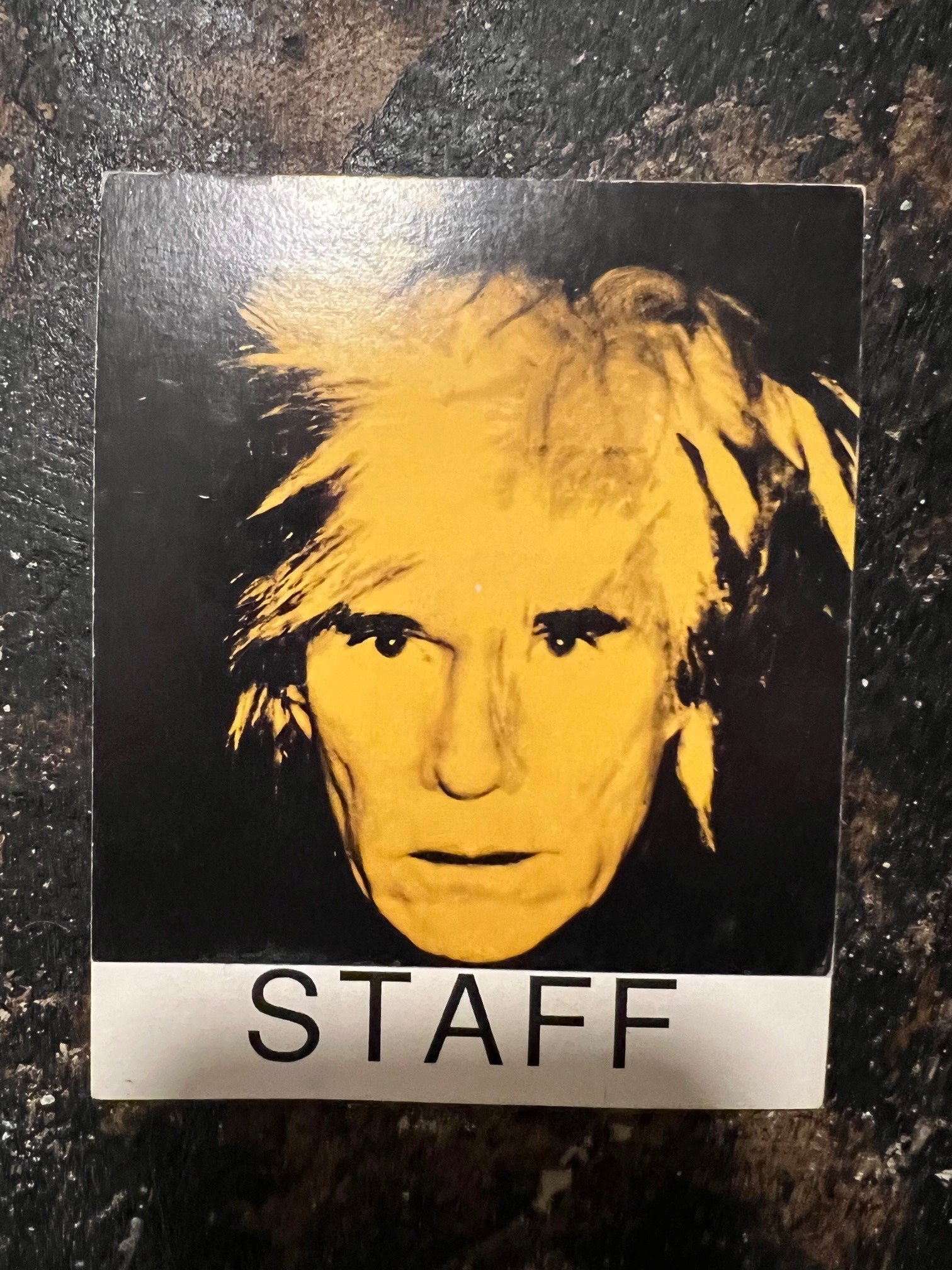The Supreme Court of the United States has issued its long-awaited ruling in the dispute between photographer Lynn Goldsmith and the Andy Warhol Foundation for the Visual Arts (AWFVA) on May 18, 2023. The Court held the AWFVA’s delivery to Condé Nast magazine in 2016 of an Andy Warhol silkscreen from 1984 based on a 1981 Goldsmith photograph of the musician Prince did not satisfy the first factor (of four) of the statutory fair use elements. The Court took a narrow approach, explicitly declining to reach the question of whether Warhol’s original work would qualify for a fair use defense, holding only that the 2016 use did not.
(Williams College Museum of Art Security Badge, ca. 1993)
Read More
Topics:
Cariou v. Prince,
Copyright Act,
Philippa Loengard,
Campbell v. Acuff Rose Music Inc.,
Kernochan Center for Law Media and the Arts,
17 U.S.C. § 107,
Columbia Law School,
Andy Warhol,
Fair Use,
Andy Warhol Foundation for the Visual Arts,
Syracuse University,
Condé Nast,
Kagan,
Sotomayor,
Roberts,
Titian,
Lynn Goldsmith,
Vanity Fair,
Thomas,
Giorgione,
Goya

Sullivan has filed an amicus curiae (friend of the court) brief in the upcoming Supreme Court case Andy Warhol Foundation for the Visual Arts, Inc. v. Goldsmith. The brief was filed as counsel of record for copyright scholar Philippa S. Loengard, the Kernochan Center for Law, Media and the Arts at Columbia Law School. The case concerns the applicability of Section 107 of the Copyright Act, which permits as a fair use that would otherwise be copyright infringement—to a print made by Andy Warhol from a photograph of the musician Prince by photographer Lynn Goldsmith. In particular, the question presented to the Court addresses the implications of the Court’s holding nearly thirty years ago in Campbell v. Acuff-Rose Music, Inc., 510 U.S. 569, 579 (1994) that allowed for the possibility that a secondary use could be considered a fair use if it were sufficiently “transformative.” What exactly that means in the context of visual art has been a fraught—and at times incoherent—subject in recent years. Our brief explains that the Court should return the analysis of fair use to the four factors established by Congress. In the case of the first of the four factors, the Court should focus on the statutory language of the purpose and character of the works. By contrast, the inquiry into the meaning or message of the works advocated by the Warhol Foundation and the amici supporting it is a fool’s errand that provides no clarity and would render the copyright in photographs effectively unenforceable. This case is not a battle between Lynn Goldsmith and Andy Warhol; those artists proved entirely capable in 1984 of arranging the balance for themselves. It is a battle between a maximalist view by the Warhol Foundation that dismisses the value of photography as a creative medium at all.
Read More
Topics:
Copyright Act,
Roy Orbison,
Toward a Fair Use Standard,
Campbell v. Acuff Rose Music Inc.,
Kernochan Center for Law Media and the Arts,
Philippa S. Loengard Esq.,
Columbia Law School,
Prince,
transformative,
Andy Warhol,
Fair Use,
Andy Warhol Foundation for the Visual Arts,
Condé Nast,
People Magazine,
The Time,
2 Live Crew,
Death Valley,
Velázquez,
Rubens,
King Philip IV of Spain,
Las Meninas,
Section 107,
Billboard,
Pierre N. Leval,
“Oh, Pretty Woman”,
Mickey Mouse




